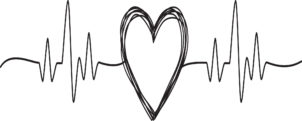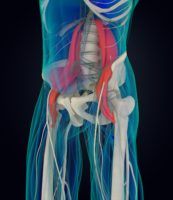 Cardiovascular fitness is an important pillar in the overall spectrum of health and fitness. The ability of the heart and lungs to function well is the foundation for fitness. Without a strong heart and good circulation, the heart can’t distribute oxygen to the tissues very well. Without good breath patterning, oxygen uptake, joint balance and the optimal function of all your systems can be compromised. But when you jump into a “cardio” type program, the emphasis is typically on heart rate. It’s common to experience the “huffing and puffing” that comes with increased load on the cardiovascular system, but it’s highly uncommon for anyone to address HOW you breathe. And believe it or not, the way that you breathe can have a real impact on whether you’re getting the results you want.
Cardiovascular fitness is an important pillar in the overall spectrum of health and fitness. The ability of the heart and lungs to function well is the foundation for fitness. Without a strong heart and good circulation, the heart can’t distribute oxygen to the tissues very well. Without good breath patterning, oxygen uptake, joint balance and the optimal function of all your systems can be compromised. But when you jump into a “cardio” type program, the emphasis is typically on heart rate. It’s common to experience the “huffing and puffing” that comes with increased load on the cardiovascular system, but it’s highly uncommon for anyone to address HOW you breathe. And believe it or not, the way that you breathe can have a real impact on whether you’re getting the results you want.
Not too long after my son was born, I had trouble running for longer than about 20 minutes. I had been on bed rest during the last month of my pregnancy, so I figured I was just really out of shape, and it would simply be a matter of time before I was able to build up my stamina again. But even after several months, I kept hitting a wall at about 20 minutes. It didn’t matter what I changed, how I backed off or sped up, I was just not able to get past that 20 minute threshold. I saw specialists, got postural advice, tried new therapies, I even bought a special device that was supposed to help me strengthen my diaphragm as I worked out! Nothing did the trick, until I began to deconstruct the WAY I was breathing. I had a breath pattern dysfunction that was literally blocking my ability to get past that 20 minute mark. In my case, the solution was to release my thorax and access my core in a slightly different way, to allow my diaphragm to its job properly. This allowed me to get a deeper, more natural breath as I ran. To sustain this better breath, I had to slow down for a while. With a little time, attention and lots of practice, I was able to work beyond the challenge and reach my goals.
What is important to understand is that the brain gives breathing TOP PRIORITY in your body. Breathing is essentially the process of balancing oxygen and carbon dioxide in the human body. Too much carbon dioxide, and too little oxygen in your tissues, leads eventually to death. If the mechanism you use to breathe isn’t working at it’s best, then the brain will find some other way to create the conditions necessary for you to get the necessary oxygen into your body. That means that other muscles (neck muscles, shoulder muscles, back muscles etc) will be recruited to help out; leaving whatever their main functions are to help out with the process of breathing instead. Our muscles don’t multi-task much better than we do, and when they try, mobility, stability and other aspects of performance suffer as a result. Whether you’re a super-fit athlete, or whether you’re someone who’s just getting back into cardiovascular fitness, paying attention to the way you breathe can help you reach your goals faster, and with much better results overall!
Here are five things you can do to improve breath function and get better results from your cardiovascular training:
1. Open Your Thorax
Bracing the rib cage is a fairly common postural issue that has an impact on breath and movement overall. Imagine space between the “rings” of your ribs. Visualize the rib “rings” as smoke rings floating and rising into the air over your head as you run or workout. This is a nice 3-D image that can create lots of space for breath.
2. Release Your Shoulders
It’s not uncommon to see people “hunker down” to push through particularly challenging phases of their workouts. Sometimes though, this has the effect of locking the shoulders down onto the thorax – potentially inhibiting good motion of the thorax, ease in the shoulders and effective breathing! Hang the shoulders on the rib cage, allowing them to float like driftwood on water. Imagine space between the back of the armpits and the shoulder blades. As you progress through your workout, notice whether your shoulders start to creep up towards your ears. If they do.. you may want to look at other aspects of your breathing.
3. Train Core Integration, instead of Core Strength
A comment I hear sometimes from runners is to “tighten the abdominal muscles and keep them tight as you run.” What often see as a result of that cue is a tension pattern in movement that actually prevents the respiratory diaphragm from doing its job well. They’re making it HARDER to breathe as they work. The core needs to be active, no question – but make sure you understand that the core is not just about turning on muscles, it’s about how those muscles work together to create stability and control. (See my earlier post “8 Steps to Integrating the Core” for more information on this).
 4. Lengthen Your Psoas
4. Lengthen Your Psoas
The psoas muscle is a deep hip flexor muscle which quite often gets tight and ignored. It is important because it has connective relationships with both the diaphragm and the pelvic floor. It quite literally connects your breath to your gait! Lengthen the psoas, feel it’s motion in your gait and explore its relationship to breath. You’ll find your breath will feel longer, lighter an easier. A less effortful breath = better performance.
5. Monitor Compression in Your Whole System as you Work
As you start your workout, notice the sensations in your body. Where do you feel light and easy? Where do you feel motion is effortless? Check in with yourself over the course of your session. Notice if your neck starts to feel “tight” or your shoulders feel heavy. Observe the point at which your chest begins to feel compressed, or if the limbs aren’t moving as smoothly as you’d like. These feelings indicate that your system is being challenged. Your job at that point is to re-introduce ease however you can. That may mean introducing imagery that helps, slowing down a bit, or easing back slightly. If you continue to work at that intensity, you may be building compression into your system. Constant struggle is not necessarily your best path to optimum health. Take the time to find ease. It will improve results over the long term.
Have you ever thought about the way that YOU breathe? Where do you feel your breath when you take a deep inhale? Do you ever feel that an inability to breathe well is impacting your fitness or your health? I’d love to hear your story! Please leave a comment below if you’d like to share.
